5G and IoT will enable vehicle-to-everything connectivity LEARN MORE
FUTURE E-MOBILITY CEOs

MOTORING ON ALLTERRAINS





5G and IoT will enable vehicle-to-everything connectivity LEARN MORE





CATCH THE LATEST UPDATES AND RECEIVE EV NEW INSIGHTS

EDITOR-IN-CHIEF
TOM SWALLOW
CHIEF CONTENT OFFICER
SCOTT BIRCH
CHIEF DESIGN OFFICER
MATT JOHNSON
KIERAN WAITE
THOMAS LIVERMORE
KAYLEIGH SHOOTER
CHIEF OPERATING OFFICER
STACY NORMAN
CEO
GLEN WHITE
GRAPHIC DESIGNER SAM HUBBARD VIDEO PRODUCTION MANAGER PROJECT DIRECTOR MARKETING MANAGERThis month we’re focusing a lot on the digital ecosystem driven by artificial intelligence (AI). While electrification itself is an exciting topic, the convergence of automotive and technology seems to be one of the more critical subjects, aside from actually providing enough batteries to supply such solutions.
The use of AI in EVs marks a new era for both the industry and the minds of consumers as car makers offer up alternative solutions that double as new ways of approaching mobility. Battery swapping seems like one of the most convenient ways of getting EV drivers on the road faster, but when looking at the battery production output, it’s clear that the current capacity is not high enough.
Cities will also start to look from a different digital perspective. Cars have the potential to integrate with more. The first port of call is smart charging and looking at how businesses can help consumers manage their energy usage, particularly in times of energy price rises and questions of financial viability.

AI is coming for e-mobility and, before we know it, everything will be connected.
TOM SWALLOW EDITOR-IN-CHIEF tom.swallow@bizclikmedia.com
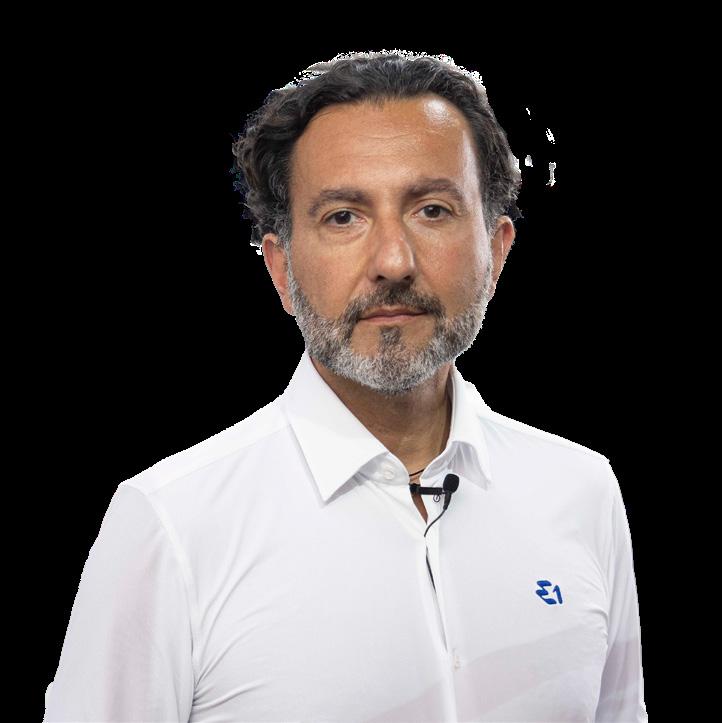








024 COVER STORY
Extreme E: pioneering sustainable motoring on all terrains

036 CONNECTED CAR

5G and IoT will enable vehicle-to-everything connectivity

046 CHARGING & INFRASTRUCTURE
Are there enough electric vehicle batteries?
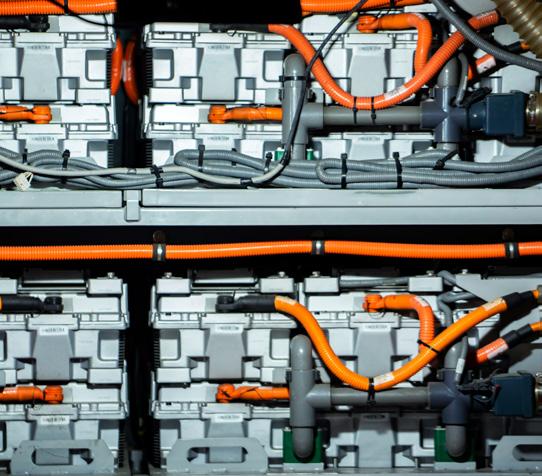
054 FLEET & COMMERCIAL
Bringing EVs into a digital ecosystem
062 MOBILITY
Autonomous EVs are the vehicles of a carbon-free future

072 TOP TEN Future E-mobility CEOs

088 EV MAGAZINE LIVE
Join us for an EVening like no other discussing 'The Future of EV' — live streamed from The London Transport Museum

In-depth discussions have taken place around the viability of electric vehicles (EVs) for logistics. During that time, we’ve witnessed Amazon receive its first Rivian Automotive electric vans in the US, Tesla gearing up to deliver its Semi, and Waymo making breakthrough strides in autonomous trucking.
The question today doesn’t revolve around the ‘if’, but the ‘how’. Electric heavygoods vehicles have increased range and meet, if not exceed, the capabilities of conventional trucks. But, how will autonomy play a role in the industry? This is where technology companies, like Waymo, are stepping up to provide self-driving solutions that will streamline logistics, use vehicles more efficiently, and, in some aspects, keep people and cargo safe.

Electrification is changing the definition of engineering. To differentiate between two different models of fossil-fuel-powered vehicles, automotive manufacturers will tinker with valve timings, fuel injection, and other mechanical processes to meet performance requirements.
Of course, these days, computers are heavily involved in the process, and each petrol or diesel vehicle has its own computer to control parameters for different settings. Switching to batteryelectric power means…well, that the vehicle is the computer. Swapping combustion for voltage has altered the way that engineers approach automotive finesse, which itself hinges on technology prowess.
So, internal combustion engines (ICEs) are out and will one day be nothing more than a part of history. In comes the battery as the heart of the humble automobile, turning it into a flexible, improvable machine that has much
higher potential than its petrol or diesel counterparts.
Much like engines, batteries are formed in various ways and manufacturers are looking to optimise performance from battery cells, combine them as battery modules, and input them into EVs as battery packs.
In the previous issue of EV Magazine, one of the most common battery packs was explained, the platform battery, which is used by many and developed by dedicated technology innovators.

• Lithium-ion batteries - used by many manufacturers, including Tesla and Jaguar

• Nickel-metal hydrideused predominantly by hybrid manufacturers like Toyota
The longevity of a battery pack is determined by the number of miles it can reach in a defined number of years. As an example, the Kia e-Niro is expected to achieve 100,000 miles over seven years.
Most car dealers are able to offer long warranties for EV batteries and guarantee 70% original capacity in that period.
With limited materials for batteries, mining industries are under pressure to meet demands while cell innovators are researching alternatives to ease the pressure on other materials. Increasing the energy density of batteries allows developers to shrink battery sizes, which should ultimately reduce the quantity of precious materials per unit.
Another option to reduce the strain on the industry is battery recycling, as muchneeded minerals and metals can be found in effective batteries.
Aviation is undergoing its own electrification journey; Eviation is one of the companies taking strides towards national electric transportation by air
One aviation firm making a name for itself at the minute is Eviation. The Alice aircraft is the company’s pioneering solution to electrification in the industry and received recognition from DHL for its potential.
In late-September 2022, Eviation demonstrated the first successful flight of the Alice, which is the aircraft DHL has ordered as it looks to electrify its airfreight fleet. While the prototype will not be used for international flight, it is capable of carrying a total payload up to 2,500lbs at a maximum air speed of 260 knots. The plane is 19.2m in width and 17.4m long.
As established by Gregory Davis, President & CEO, “Eviation is all about expanding human possibilities by changing the way we
think about air travel. Electric flight is a step change in how we will soon be travelling and shipping. It will change our society.”
The company was founded in 2015 by Omer Bar-Yohay and Aviv Tzidon in Tel Aviv, Israel. The idea was purely electrification, and the company is wholly committed to the shift from fossil fuels to battery power. It is host to a proudly diverse team of experts and innovators that lead the company’s commitment to the wider sustainability of transport.
In 2017, the Orca small-scale prototype was developed and shared at the Paris Air Show. Since that time, the company has been recognised by the Crystal Cabin Award, International Yacht and Aviation Awards, European Technology Awards, and the iF Design Award.
The first flight of the Eviation Alice signified the progress that has been made to integrate the Magni X electric motor into the plane and continues to raise the eyebrows of one of its major stakeholders, DHL.

"ELECTRIC FLIGHT IS A STEP CHANGE IN HOW WE WILL SOON BE TRAVELLING AND SHIPPING. IT WILL CHANGE OUR SOCIETY"

In a bold new era for motorsport, Extreme E is breaching into the unknown in many ways. First of all: electrification. The very existence of the landmark racing championship is a result of the need for emissions’ reduction. The second is the landscape. Despite the track laid out in front of them, Extreme E drivers never know what might be hidden under bumps in the track or waiting for them over the crest of the world’s largest dunes.
Laia Sanz and Carlos Sainz, both Extreme E drivers, have an immense desire for

overcoming the largest hurdles and leading change, and are here to share their experiences with Extreme E.
LAIA SANZ: “When I step into the car, the only thing that comes to my mind is to try to be as fast as possible and to avoid any problems or destroy the car, or something like that. I just want to do a good job for the team and be as fast as possible, that’s my mentality.”
CARLOS SAINZ, ACCIONA: “The crash I had in Sardinia this July, definitely. The worst of it is that the other car came out of the blue, so I couldn’t really brace for the impact. One moment I was going for the win, and then, next thing I knew, I was rolling off the track upside down.


It was really painful, but, fortunately, I was just bruised and then we managed to race again that week in a big team effort to rebuild the car.”
LAIA SANZ: “When I had the chance to come to Extreme E, it was something amazing. Carlos called me and asked me if I wanted to join and of course I did, because it was an amazing opportunity for me. This series is really interesting and to race with a
legend like Carlos is something great, also, because I was just starting my career on four wheels, it was an amazing opportunity to learn and to grow as a driver.
One thing that’s really nice about Extreme E is that it’s full of champions of different racing backgrounds and it’s great to be with the best drivers, to compete with them and learn from them. The message of the Championship is also really interesting and its fight against climate change is unique, so all these things make me really happy to be in Extreme E.”
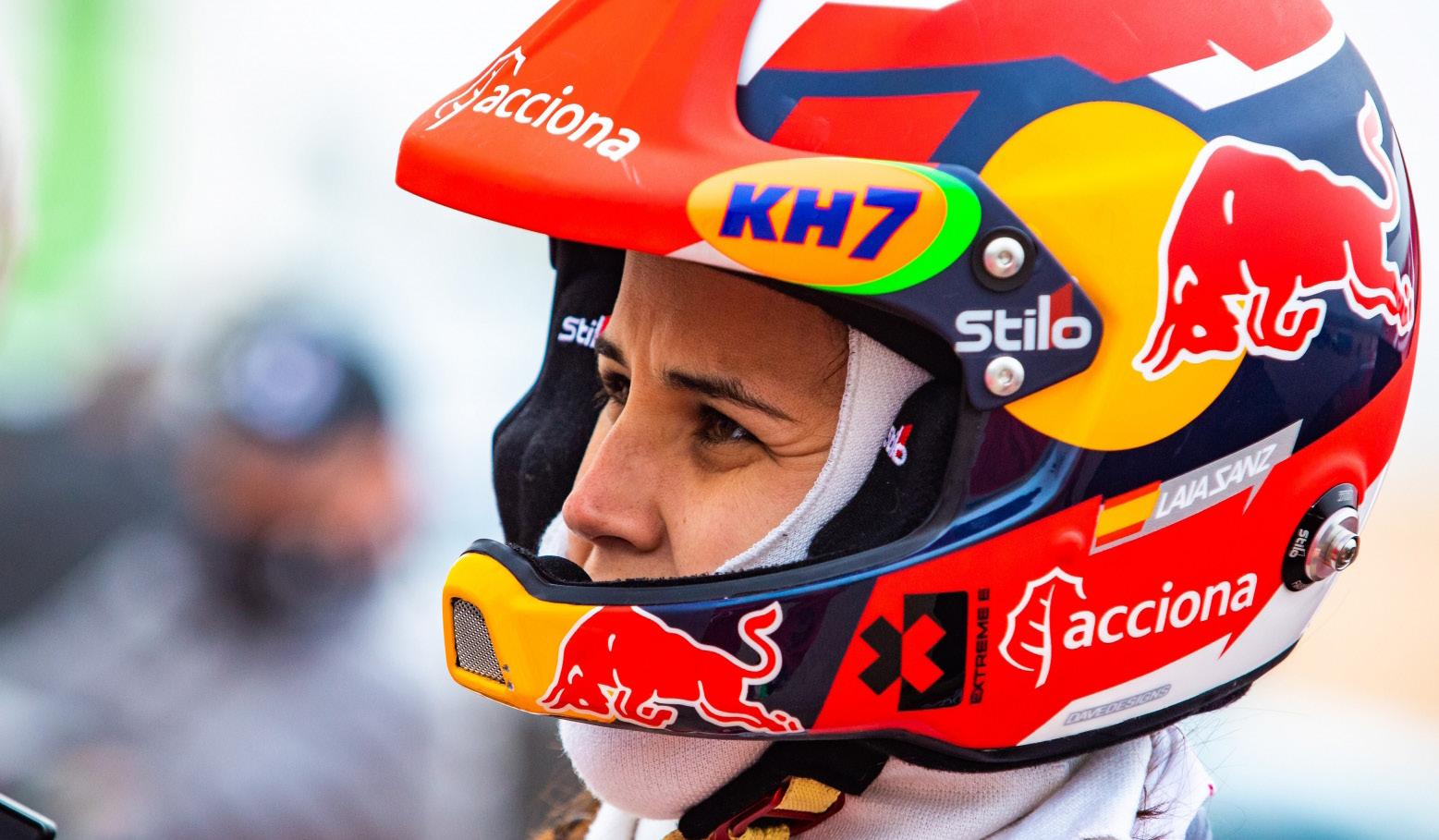
CARLOS SAINZ, ACCIONA: “I try to optimise the energy consumption of my family home, which includes everything from ensuring that the home appliances we use are energy efficient to powering the house by installing solar roofs and using electric cars in our day-to-day life to further reduce our carbon footprint. I have been doing this for a number of years now, but ever since joining Extreme E, I have learnt many more things about climate change, its causes and consequences, and the things we can do to try and stop it. Therefore, right now, I am more aware of the importance of those small actions and the need to implement them in our lives. If we all do it, it will surely make a difference.”
LAIA SANZ: “I think we work well together, and I just feel lucky to have this opportunity. I feel a lot of respect for him, even more than before. He has won everything and he is still

hungry. He is still like a young driver, always looking for victories and for improvement. He is always working. We are always one of the teams that leave the track later in the evening and arrive earlier in the morning. I like his work ethic and I feel really comfortable.
“Of course, especially in the beginning, there was a bit of pressure, because I know how he wants to win and I didn’t want to make mistakes, I wanted to help the team as much as possible, but now I am getting used to that, and I feel much more comfortable and faster. I am helping the team more and it is a nice thing for me.”
CARLOS SAINZ, ACCIONA: “Laia is a great talent. She has had a brilliant career on two-wheels, winning multiple world championships, and she is really brave for taking the challenge to transition to fourwheels, which is a completely different challenge that has taken her out of her comfort zone. She is willing to learn and she is improving really fast.
“I think she has blossomed in Extreme E this year, because she is already among the fastest on the grid and she is still getting better. I already knew her from the Dakar, but it has been really nice to share this experience in Extreme E with her.”


“EXTREME E IS AN INCLUSIVE PLATFORM, WHICH GIVES VOICE TO EXPERTS IN CLIMATE SCIENCE AND ENABLES THEM TO REACH MOTORSPORTS FANS”
ALEJANDRO AGAG
FOUNDER AND CEO, EXTREME E

(Units sold in Q3 of 2022)
1 TESLA MODEL Y 60,271
2 TESLA MODEL 3 55,030
3 CHEVROLET BOLT EV 14,709
4 FORD MUSTANG MACH-E 10,414
5 TESLA MODEL S 9,171
“THE WORLD AROUND US IS RAPIDLY CHANGING. LUXURY GOODS ARE INCREASINGLY SOUGHT AFTER AS EXPRESSIONS OF [INDIVIDUALITY]”
TORSTEN MÜLLER-ÖTVÖS CEO, ROLLS-ROYCE MOTOR CARS

TESLA MODEL Y


The type of charging used for an EV depends on a couple of factors. One of these is the ability of the vehicle to use a certain charger. The difficulty for some drivers these days is ensuring they have the correct plugs and adapters for their EVs.
Secondly, the way it charges differs depending on the type of charger. The AC and DC charging discussion is one that stumps most people, but it need not be hard to figure out. Alternative current (AC) chargers can only be used by cars that are capable of converting electricity to direct current (DC), which is what EVs use.
These usually come in much smaller forms and can be installed in homes and office environments to charge EVs that have DC conversion units integrated into them.
AC charging is the slowest charging format as the car must work to gain power. Converting AC to DC current takes significantly longer than it would to charge via a DC charger— a charger that provides DC directly to the car.
“FOR THOSE INTERESTED IN EVS, THEY WANT TO KNOW HOW THAT CAN OPERATE IN A WORLD WHERE RECHARGING TAKES MORE TIME AND PLANNING”
PHILIP VAN DER WILT, VP EMEA, SAMSARA
The AC and DC charging discussion is one that stumps most people, but it need not be hard to figure out
Despite the short-term benefits of alternative vehicles, such as plug-in petrol and diesel hybrids, International Energy Agency’s (IEA’s) 2010 roadmap predicted the automotive demand to shift in favour of EVs and hydrogen power.
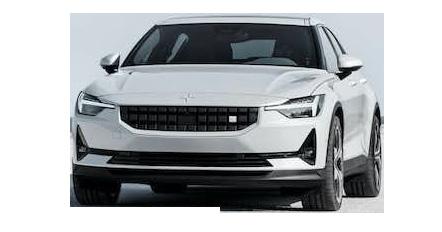
Currently, the trends are on the rise, but we’re yet to see hydrogen shine as bright as EVs, with more organisations releasing solutions for both light vehicles and heavy-goods trucks.


 BY TOM SWALLOW
BY TOM SWALLOW
Motorsport is taking on a new form. Beyond the collaboration of leading organisations and the excitement of high-power output from the smallest of engines, technology and sustainability are incorporated into the fold.
As a result, new businesses are entering new territories and supporting motorsports teams that have become home to worldchanging initiatives. We saw it with the idealisation of Formula E in 2011, and we’ll continue to witness change through the E1 powerboat series.
But the focus today is the racing season that just completed its second global tour: Extreme E.
Following the creation of Formula E, its Chairman Alejandro Agag—also Founder and CEO of Extreme E, and Chairman of the E1 Series—decided it was time to take electrification to even greater heights.
The Extreme E series was conceived in 2019 as an initiative to raise awareness of climate change and how electrified mobility can shape a more sustainable future. The off-road racing championship attracts the adrenaline junkies; some of the most fearless drivers in the world came to showcase the ODYSSEY 21 electric SUVs in some of the most challenging environments on the planet.
Sporting peak power of 400 kilowatts (550bhp), the EV is designed for treacherous off-road racing with minimal impact to the environment from an emissions’ standpoint. As the teams gain the attention of the public, turning their focus to climate change, and environmental and social impact, they work as a collective to facilitate change and showcase to the world what could be achieved on a much larger scale.

International
550hp (expected)
Targeted 0-62mph in under 4.5 seconds
+124mph
40kWh
The ODYSSEY 21 is the standard electric vehicle for all teams racing in the Extreme E championship. The car is engineered by Spark Racing Technology, a developer of high performance electric cars and modules. Teams in the Extreme E line-up are tasked with finetuning the vehicle for the highest possible performance, while enabling a suitable level of charging for remote operation.




Teams and partners rallied around the motorsport throughout the duration of two race seasons to provide support for the drivers that have taken on both the race and climate challenges it aims to address. This result has influenced a number of sustainable mobility solutions that can be translated into commercial applications for electrification of automobiles, charging infrastructure, and even renewable energy projects.
Much like its street racing counterpart, Formula E, the aim of the Extreme E initiative is to develop products and services that its partners can inject into suitable industries. Renewable energy sourcing through offgrid technology can be applied to almost any function, battery innovation confirms the longevity of units that will be leveraged by battery cell and car manufacturers, and fast, reliable charging solutions are in high demand in highways all around the world.
Starting from the ground up, the Extreme E tyre supplier Continental developed a bespoke unit specifically for the ODYSSEY 21 and is also a founding partner of the championship. A special version of its Continental CrossContact production tyre was developed to suit the various environments visited throughout each year.

“THERE ARE UNIQUE CHALLENGES IN THIS UNIQUE RACING SERIES”
XAV IER SERRA, HEAD OF CU PRA RACING
Aside from this, the company provides a critical service for the motorsport, the ContiConnect system, which allows teams to better manage their tyres during each race. From tyre pressure to temperature, teams receive real-time data via a sensor inside the tyre, which enables great insights both on and off site.
“As part of the ‘one-tyre-fits-all’ approach of Extreme E, the tread pattern has been optimised for top performance on every kind of terrain our planet has to offer, and the tread compound was specifically designed for this tyre,” says Peter Robb, Marketing director UK and Ireland at Continental.
In terms of maintaining the sustainable approach of Extreme E, Continental is “already seeing great success in these efforts”, Robb says. “We’ve continuously increased our efficiency in water and energy


Each race comes with its own challenges, yet also presents new opportunities for environmental impact. From AlUla in the Saudi Arabian desert to rocky and foliage-filled tracks along the Mediterranean sea, the cars, their drivers and the solutions that support the race—charging, energy storage, and supporting vehicles—must be able to withstand the harshest of environments.
Extreme E acquires the help of environmental experts and scientists to assess the environments in which the series enters. One of the leading scientists drafted into the research and development stage of the motorsport is Carlos Duarte, a researcher of marine ecosystems—and supporting force in the E1 Series—as well as other experts in the natural environment.
consumption by running energy saving programmes for more than a decade.”
Not just breeding grounds for innovation, Extreme E races are some of the most rigorous test beds the automotive industry has ever seen. With the landscape predominantly in dry, uninhabited areas where infrastructure features the bare minimum, the difficulty partners face when innovating for this motorsport is to create machines and systems that work in similarly inhospitable environments, then to test and share them with industries.

“There are unique challenges in this unique racing series. The best thing about it is that these challenges completely change from one weekend to the other,” says Xavier Serra, Head of CUPRA racing.
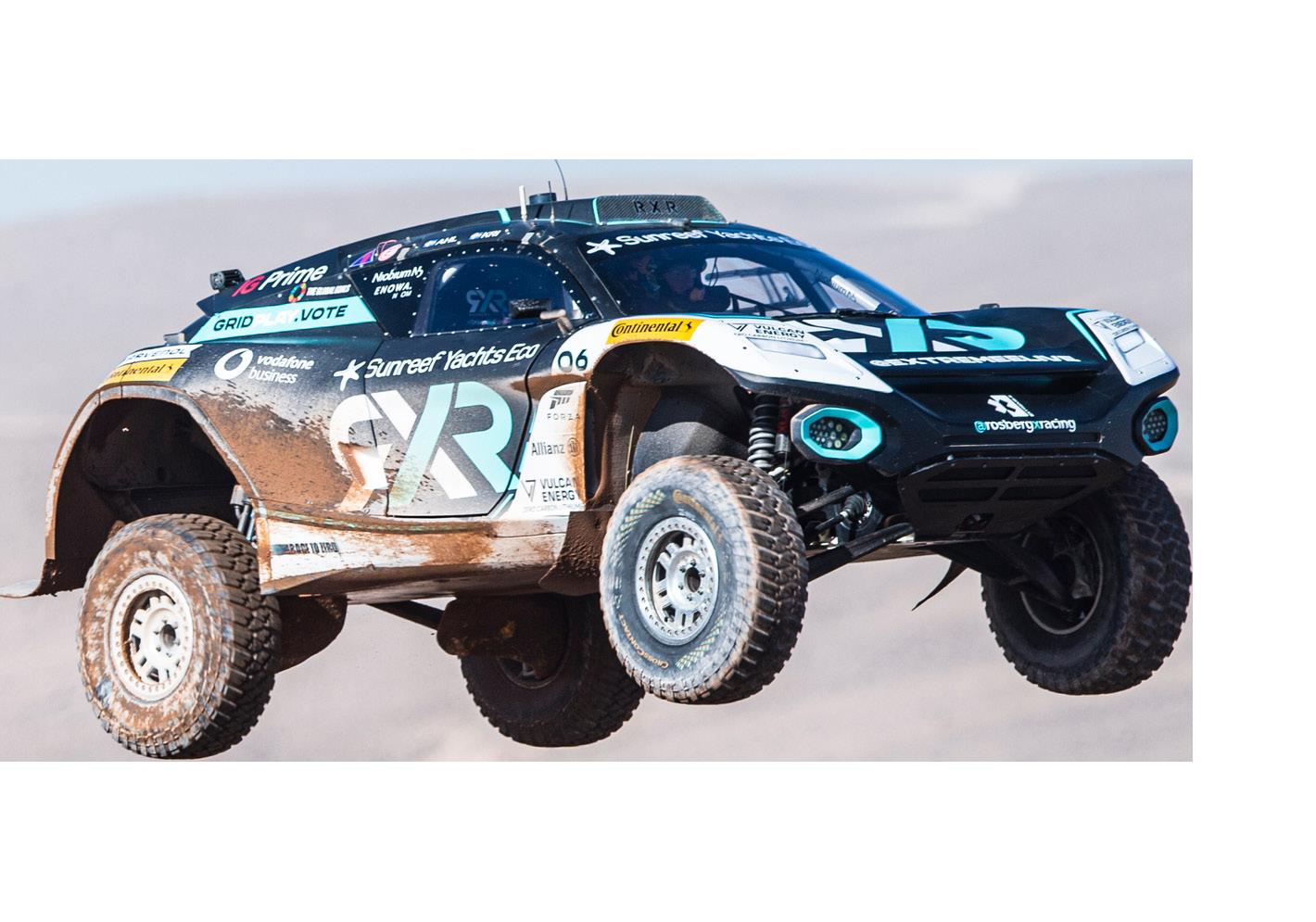
“It’s true that these cars can adapt to racing in any type of terrain and conditions, but to do so, the team has to work together with the drivers to find the perfect set-up to each race, with limited testing, so the skills of the drivers and engineers have a bigger role here to make the prognosis for each weekend.”
Serra also explains that, for the automotive industry to successfully adopt e-mobility solutions, companies must locate the right talent and help them understand how engineering as a profession is being driven by technology, meaning professionals must be well-equipped with the skills and knowledge to apply electric powertrains to cars.
“The industry needs to reinvent itself, and continue developing new ways to train young talents, especially through technology,” says Serra. “We need to find resources that can

On the 27th June, the partnership between NEOM and McLaren Racing entered into a new phase. As the sustainable smart city looks for the right talent and R&D expertise, NEOM formalised its agreement with the racing team to provide critical innovation insight that teams will translate to the OXAGON project—a new, harmonious paradigm for people, industries, and nature to thrive in.
As the team travels the world to spread the sustainability message, McLaren Racing is also supporting further projects aligned with the goals of NEOM—as part of its McLaren Accelerator programme. A clean sheet for both companies to achieve great change.
To read about the NEOM x McLaren Racing partnership, CLICK HERE
in a certain way substitute on-site action to prepare new generations the best way we can, so they re spot on when this translates to working in the industry.”
According to the Chief Engineer of Mechanical Development at Williams Advanced Engineering Fred Riser, “Extreme E has pushed the boundaries of the electric vehicle industry far beyond the standard design and ‘comfort zone’.”
The difficulty of each environment presents new gaps for the teams to plug, making the industry more resilient to future changes. Engineers must consider some of the conditions that drivers and their vehicles will experience during each race, such as dust, sand, the vibrations, humidity, heat,
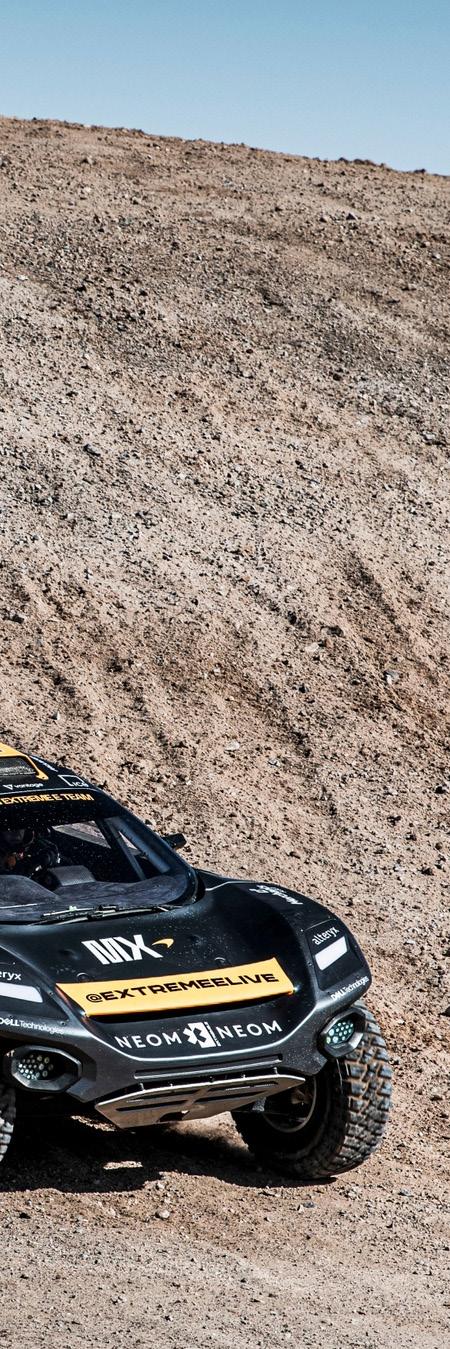
What goes through your mind as you step into the ODYSSEY 21?
CRISTINA GUTIÉRREZ:
“I love the feeling of getting into the car, it makes the race weekend come to life and you feel the pressure and adrenaline of everything you’ve been working hard towards. I am always a little bit nervous, especially in Finals, but when I step into the car, I will have been working hard beforehand to make sure I am ready, so it is just a case of remembering what I need to do and working with my engineer to execute the race as best as I can.”
SÉBASTIEN LOEB:
“I forget the outside world and focus on the track. It is at that moment that the power is in your hands of how you perform that day—you can’t let any distractions come into your head. For me, that moment is the opportunity to make myself comfortable in the vehicle and just focus on how I will attack, because even before I step in, I have done the preparation to give myself the mindset that will allow me to drive the best I can.”
What is it about Extreme E that made you want to participate?
CRISTINA GUTIÉRREZ:
“One of the main reasons I was so excited to get involved with Extreme E is that there is a balance between both my love of racing and my concern about climate change. I have been racing since I was a kid, so motorsport is something I have loved my whole life, and to be able to combine that with a positive response to help the planet is ideal. When Lewis Hamilton approached me to join the team, I said yes immediately –of course!”
SÉBASTIEN LOEB:
“When I heard about the opportunity to join Extreme E, I was immediately interested to know more. I am always seeking out new challenges – I’ve done rally, rallycross, endurance racing, cross-country and have even driven a Formula 1 car – so why not add this to the list? Then I learned about the other names who were getting involved, like Lewis, Nico [Rosberg], Carlos Sainz, Jutta Kleinschmidt, and my former teammate Timmy Hansen, and it made it even easier to say yes.”
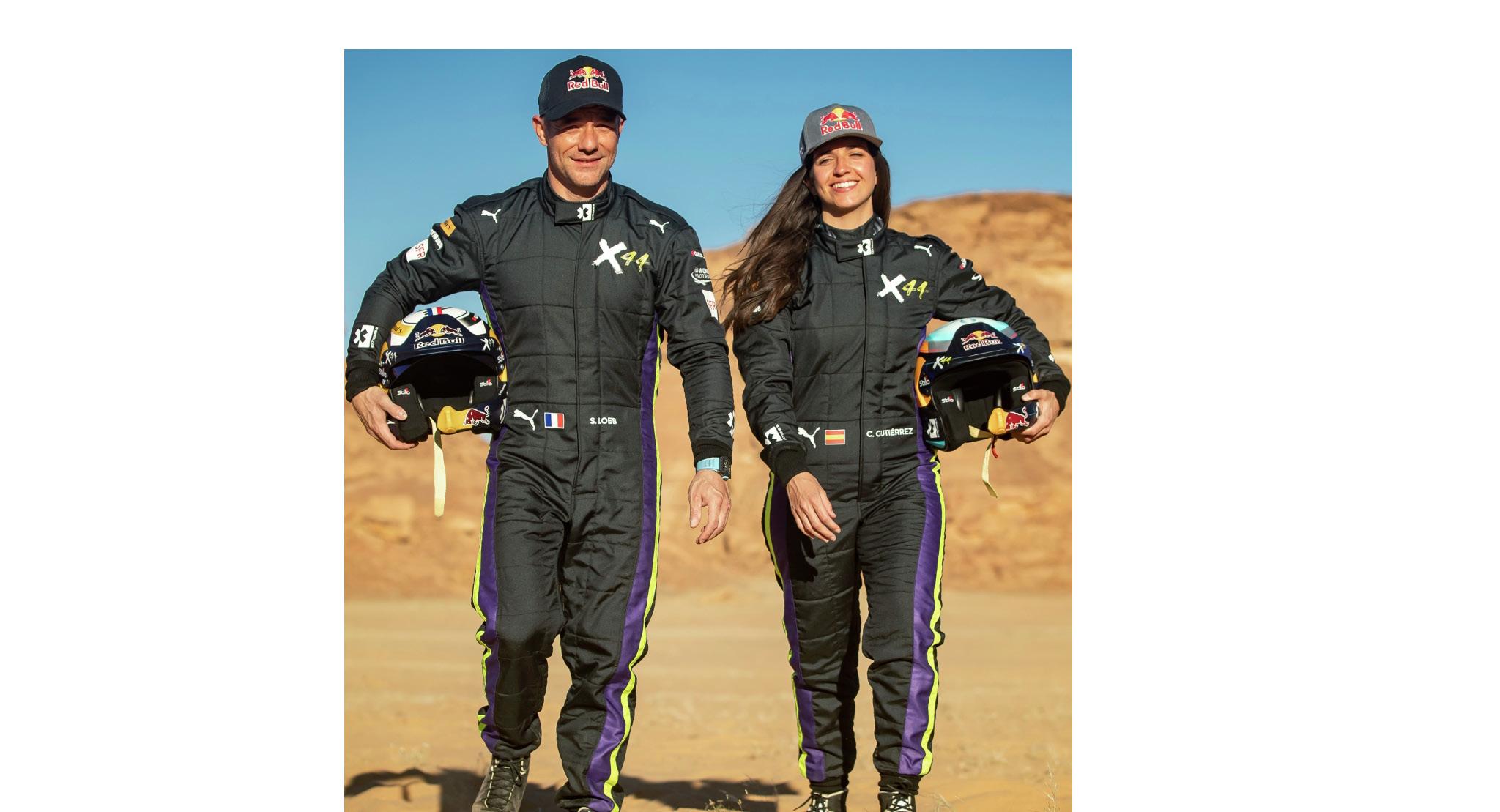


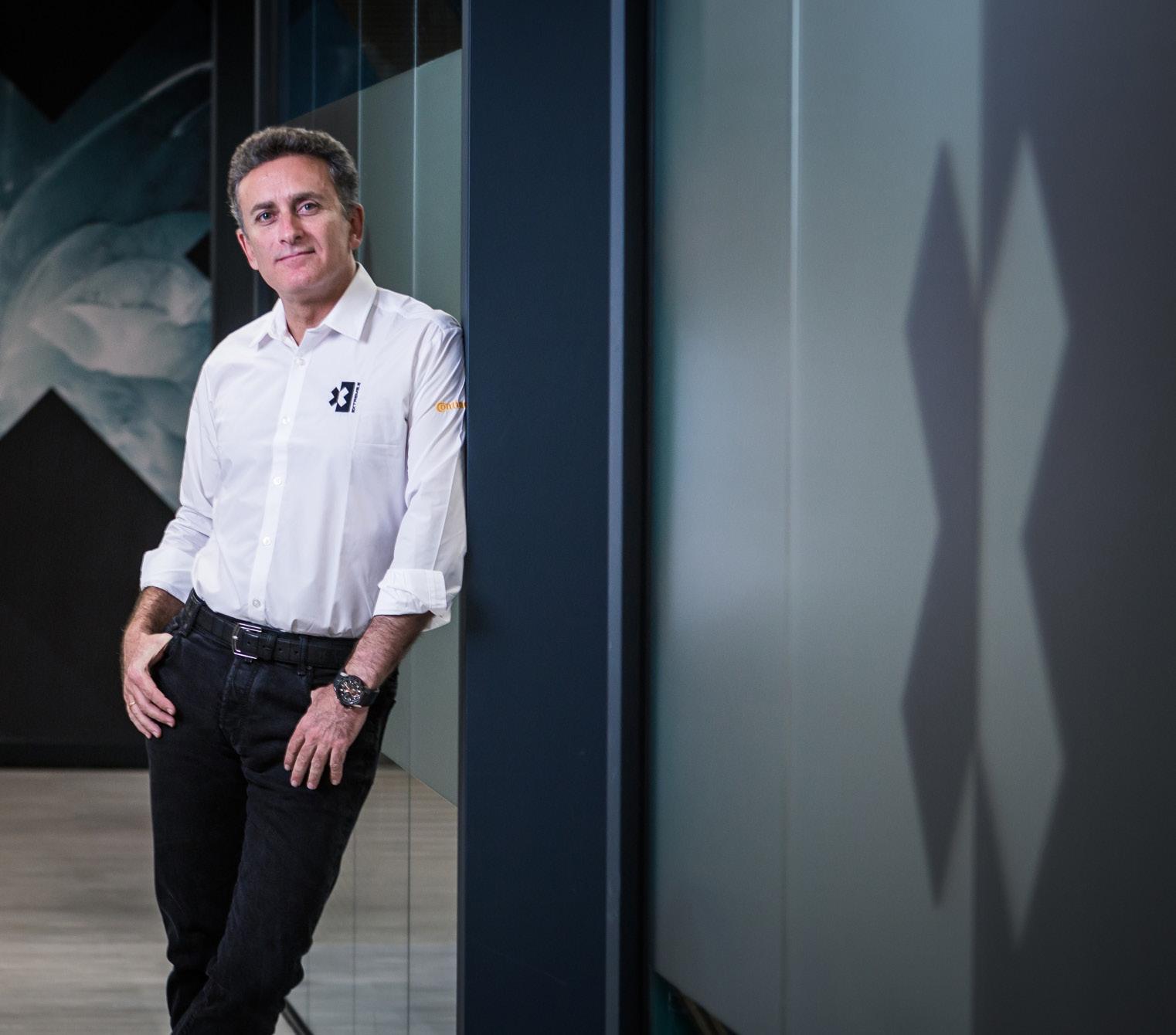
and altitude, and how each of these affect battery production.
Williams Advanced Engineering is the main supporting partner for battery development and solutions related to electric propulsion. Riser believes that charging will be a key component of modern mobility, with Extreme E applications to provide new and exciting ways to store EVs outside of cities, making room for the public and eliminating congestion.
This vision is partly supported by the ability of firms to produce reliable battery
solutions, as well as by the charging systems that will be put in place to operate remote— and potentially off-grid—charging stations. Adopting sustainable mobility solutions and limiting human activities contributing to climate change are global initiatives with many facets to consider, from the sourcing of energy and the components used in automotive production to the social and environmental implications of how we use mobility.
Extreme E is not just a motorsport; it’s an initiative driving awareness to provoke global change, both environmentally and socially.
“EXTREME E IS AN INCLUSIVE PLATFORM, WHICH GIVES VOICE TO EXPERTS IN CLIMATE SCIENCE AND ENABLES THEM TO REACH MOTORSPORTS FANS”
ALEJ ANDRO AGAG
FOUNDE R AND CEO, EXTREME E WATCH
Connectivity brings EVs into the digital must be ready, 5G-enabled, and IoT-leveraged

digital ecosystem, but infrastructure IoT-leveraged to link cars and services
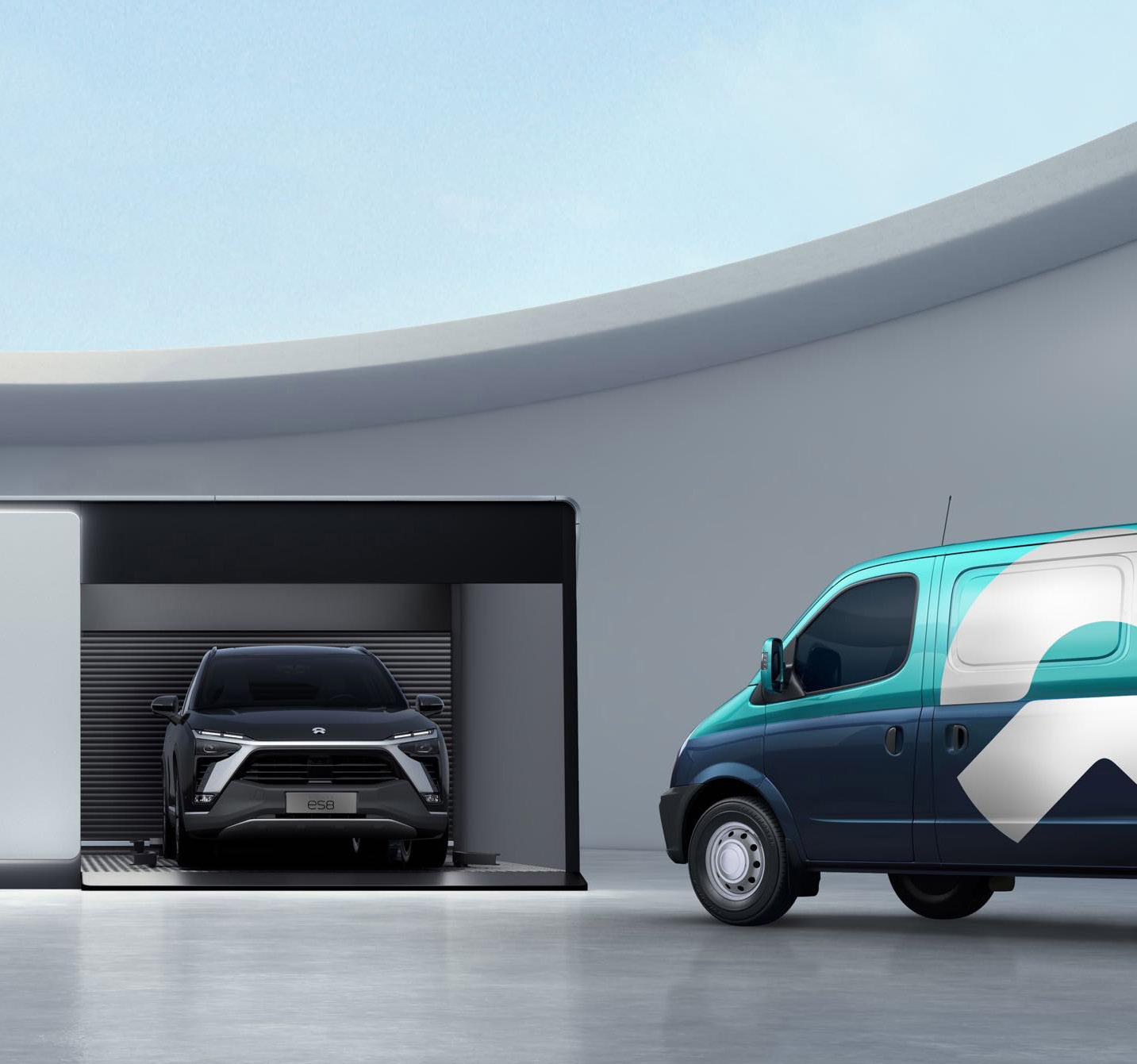
The automotive industry is at a crossroads with technology and telecommunications. Barriers to entry, lower for technology providers and digital vehicle innovation, are the differentiating factor between success and failure as more companies look to meet the needs of consumers—and the planet—in the electric vehicle (EV) market.

The challenges arising in the shift from mechanical to digital require significant input from technology professionals as everything becomes connected. Implementing this large-scale initiative, which could change the way we use transport, means enabling vehicles to connect to the surrounding digital ecosystem, and 5G and the internet of things (IoT) are key components in that.
As we look at how 5G and IoT bring EVs into the digital landscape, we turn to the experts to discover how the cloud will be integrated into e-mobility. Henry Bzeih, Global Chief Strategy Officer Automotive & Transportation at Microsoft, brings firsthand insights from the technology firm as he analyses the industry.
Bzeih tells us about the current application of IoT in the EV sector and the role 5G could play in connecting cars to their surroundings.
“IoT’s role in EV is centred around ‘things’, ‘insights’, and ‘actions’, which include the vehicle, its various interfaces and surroundings, such as smart cities, grids or utilities, and users etc,” says Bzeih.
“While the deployment of the IoT ecosystem is pervasive, there are opportunities in industry collaboration from the capture of data across the value chain by connecting and synthesising this data to improve business outcomes.
“From the 5G angle, there are myriad use cases fueled by massive connectivity, improved throughput, and super latency from the vehicle itself in areas of safety and autonomy to the factory floor.”

Much like any other industry where technology dominates the competitive environment to provide new and exciting capabilities, EVs have a dual role to play: first, to act as a global testbed for electrification and second, to feature the integration of cloud solutions to carry out functions that would otherwise be done by their human counterparts. For most drivers, this could

“FOR THOSE INTERESTED IN EVS, THEY WANT TO KNOW HOW THAT CAN OPERATE IN A WORLD WHERE RECHARGING TAKES MORE TIME AND PLANNING”
PHILIP VA N DER WILT VP EME A, SAMSARA

reduce inconveniences like maintenance and allow cars to run on the most efficient software via cloud-based upgrades.
The potential is greater than many consumers realise. Cars are already receiving upgrades through the cloud—also known as ‘over-theair (OTA)’ updates or ‘cloud-to-car’. This type of functionality brings the industry one step closer to autonomy, alleviating the need for drivers to physically take their car to be repaired in many scenarios.
“Currently, there is still a gap in the tools IoT provides for EVs, as firms are at various stages of vehicle and infrastructure testing,” says Philip van der Wilt, VP EMEA at Samsara—an organisation pioneering Connected Operations Cloud and providing fleet management software.

“IOT’S ROLE IN EV IS CENTRED AROUND ‘THINGS’, ‘INSIGHTS’, AND ‘ACTIONS”
H ENRY BZEIH
GLOBAL CHIE F STRATEGY OFFICER AUTOMOTIVE & TRANS PORTATION, MICROSOFT
The fleet software solutions provider Samsara is dedicated to providing supply chains with safety features, vehicle tracking, fuel saving and other measures. From a connectivity perspective, Samsara supports its customers with solutions that help minimise disruption and ensure smooth logistics operations with real-time insights.
The fleet management solution provided by Samsara gives valuable insights into supply chain efficiencies and changes, which can be as granular as fuel consumption and remaining supply, capacity utilisation, change of temperature in a goods vehicle, and even whether a driver is slightly distracted.
“However, IoT-enabled data is important for shaping future management decisions— especially in areas such as charge tracking. Additionally, for manufacturers of EVs, access to real-world data once their vehicles have left the production line could prove key in the further development of their vehicles.”

Much like mobile phones, cars will work at the edge while manufacturers issue updates via the cloud. The use of OTA updates varies depending on the manufacturer of the car. Software over the air (SOTA) is the most achievable form of update and has been implemented by the majority of automakers for some time. SOTA alleviates the need for software engineers to get hands-on with the car, instead allowing the roll out of updates without leaving the computer.


Pioneers in the EV realm, such as Tesla and NIO—leading car makers born from the technology field—are able to issue firmware over the air (FOTA), which is not as widely achievable in comparison to SOTA. FOTA is a fairly new concept that is yet to entice legacy automotive firms that are shifting from fuel power to electric.

“Connected vehicles have achieved organic ubiquity, especially in the developed markets. Opportunities remain as we aim to extract value beyond the traditional legacy services where connectivity expands to the world around, e.g. a secure and reliable vehicle-to-everything (V2X) connection,” Bzeih says.
“Regulation is helping this trend, but a rapid deployment of this approach is required to realise, scale and open the mobility ecosystem further. When it comes to EVs, the adoption train has left the station and now we need to solve and scale all attributes of technology, including
“FROM THE 5G ANGLE, THERE ARE MYRIAD USE CASES FUELED BY MASSIVE CONNECTIVITY, IMPROVED THROUGHPUT, AND SUPER LATENCY”
H ENRY BZEIH
AUTOMOTIVE & TRANSPORTATION,


“REGULATION IS HELPING THIS TREND, BUT A RAPID DEPLOYMENT OF THIS APPROACH IS REQUIRED TO REALISE, SCALE AND OPEN THE MOBILITY ECOSYSTEM FURTHER”
H ENRY BZEIH
GLOBAL CHIEF STRATE GY OFFICER
MICROSOFT
infrastructure, lifecycle, equity, profitability, shareholder value.”
One of the major concerns that EV drivers have is charging. In fact, range anxiety is one of the primary barriers to consumers buying electric cars. The knowledge that, in some parts of the world, charging solutions are scarce in comparison to the number of EVs on the road is a concern. But, as charging infrastructure grows, it is becoming more intelligent and, soon enough, the cloud and IoT will become critical components of bringing smart charging solutions to the masses.
“For those interested in EVs, they want to know how that can operate in a world where recharging takes more time and planning than simply pulling a lorry or van into a petrol station for five minutes and filling up,” says van der Wilt.
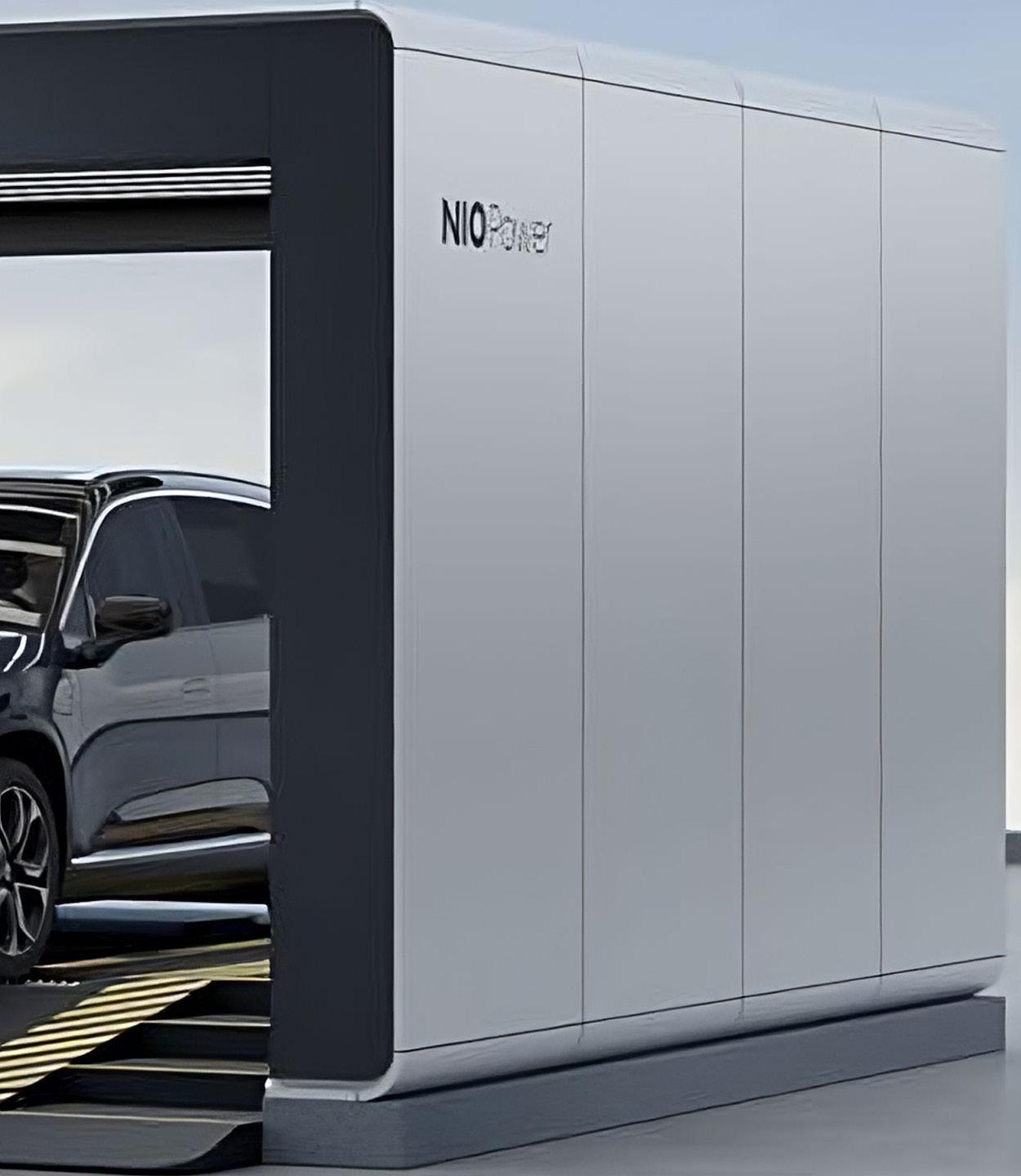

“For many operators, this interest in EVs is also their first real exposure to the power of IoT and how it gives them oversight of their entire operation, along with the insights that can be gained by data.”
While IoT has been growing in popularity across smaller digital ecosystems for the past decade, applications in the EV industry will ramp up the use of connectivity and integrate much larger networks linking buildings to cars and allowing EVs to interconnect. This will provide an abundance of benefits in both maintaining and operating vehicles as we enter an era of mobility-asa-service.
AS EV PRODUCTION RAMPS UP, BATTERIES MUST FOLLOW SUIT TO MAINTAIN THE CURRENT GROWTH OF THE INDUSTRY AND INCENTIVISE A SHIFT TO ELECTRIC CARS
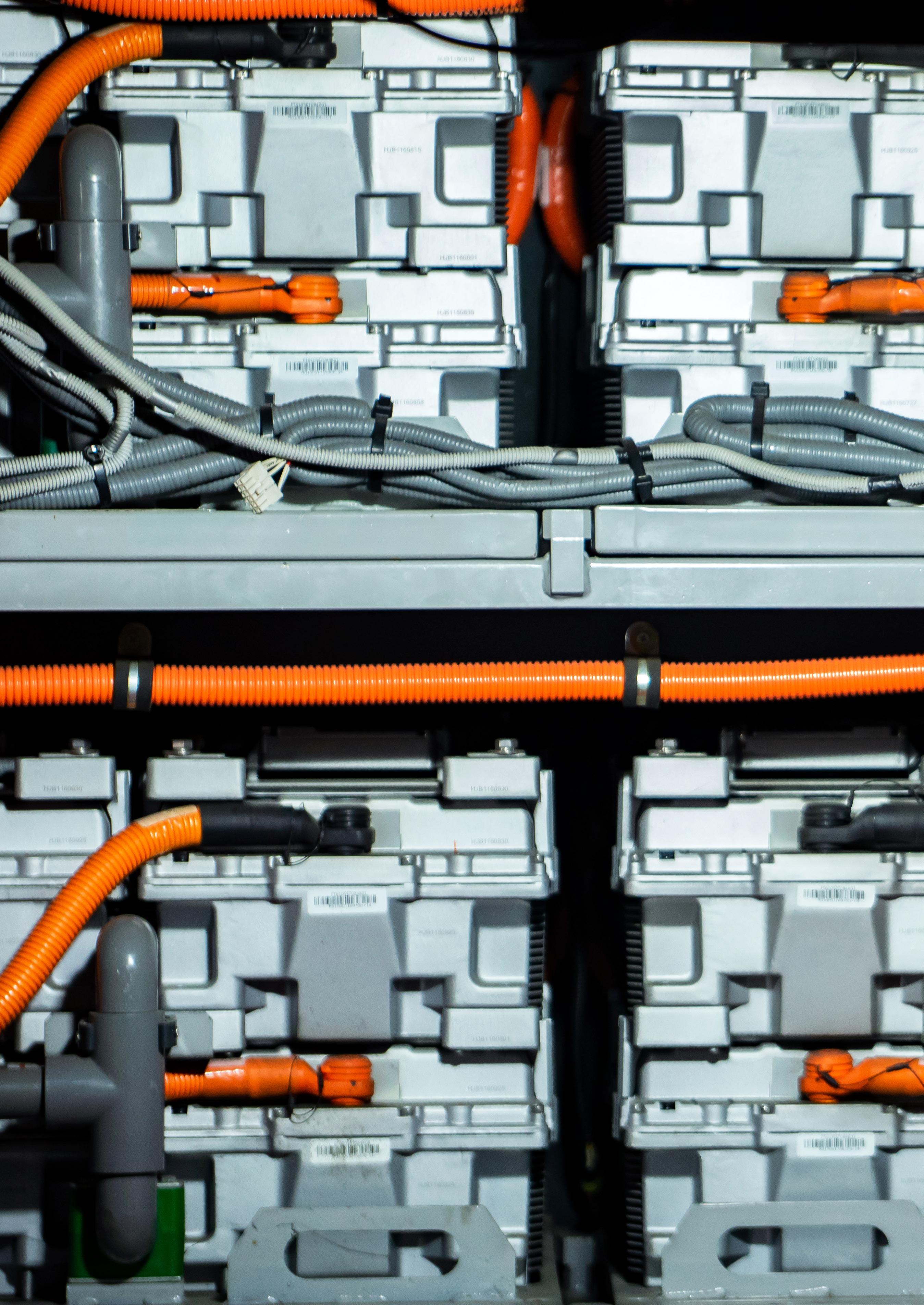


ou wouldn’t try to install a conventional battery into an electric vehicle (EV) and expect the car to perform, would you?
The answer to this question (or one similar) is the driving force behind the demand for what are known as gigafactories—providers of purpose-built batteries for the EVs of the future. As the transport industry evolves, unique battery applications are influencing the demand for custom-built batteries and state-of-the-art facilities to ensure that production meets the high levels of demand.
Growing excitement around EVs could, in many scenarios, actually become the industry’s downfall; emphasis is currently heavily weighted towards the vehicles themselves, rather than the individual elements slotted together for ultimate functionality. This is no surprise, though. The industry is led by enthusiasm around the end product, with consumers drawn to the latest automotive features, the fastest cars, and the best-looking bodies—as car enthusiasts have always been.
But, before long, the flow of battery production (among other factors like charging infrastructure and energy capacity) will determine how fast the industry moves and, as it stands, will likely stunt the growth of EV adoption due to prices remaining high. Without energy, consumers would be purchasing over-priced, heavily-engineered keepsakes rather than reducing their impact on the planet.
Battery manufacturing is now widely recognised as a critical factor contributing to the success of the EV supply chain, yet questions remain around whether the world can even produce enough batteries to fully electrify.
It’s this uncertainty that’s fuelling so many stories of startups driven by EV battery production, as well as those about leading EV manufacturers increasing their stakes in the industry. Even the engineers behind the latest cars, boats, and planes understand that their tireless efforts to create change are at the mercy of available renewable energy and battery storage solutions.
Further concerns around the transport industry’s decarbonisation arise as the supply chain switches from that of fossil fuels and combustion engines to one that’s heavily supported by rare metals and other materials. While mine operators are carefully selecting new vehicles to switch their
"THE IMPACT OF RAPIDLY ACCELERATING INFLATION IS HURTING EVERYONE — FROM BUSINESSES TO INDIVIDUALS"
There should be no borders when it comes to electric travel That’s why IONITY operates charging stations along European motorways that are open to electric vehicles of any brand With several charging points at each location With ultra-fast charging stations that recharge your vehicle’s batteries for the next stretch of your journey in the shortest time possible And with electricity generated exclusively from renewable energy sources So, you are not only travelling emission-free: the journey really is carbon-neutral Find out more here: weareonit.biz

fleets from diesel to electric, there are still questions to be asked regarding the supply of precious materials. According to the International Energy Agency (IEA), battery vehicles require six times more minerals than a conventional internal combustion vehicle (ICV).

In order to really understand the scale of potential in the battery manufacturing industry we turn to the trusted management consulting firm, McKinsey, for some critical analysis of its growth.
The company forecasts a significant amount of expansion in the battery value chain over
REQUIRED MINERALS PER VEHICLE:
Manganese: 24.5kg
Copper: 53.2kg
Lithium: 8.9kg
Cobalt: 13.3kg
Nickel: 39.9kg
Graphite: 66.3kg
Manganese: 11.2kg
Copper: 22.3kg
the next eight years, suggesting that the market value will grow by 20% year-onyear to achieve a total worth of US$360bn globally by 2030. If the industry were to follow the pathway of other renewable energy technologies, this value could be significantly higher by the end of the decade with potential for a further US$50bn.
This acceleration cannot come fast enough, particularly when global energy demand is at its highest while the supply is at constraints—not to mention the climate creeping ever closer to the 1.5-degree mark.
“Current market conditions are torrid. The impact of rapidly accelerating inflation is hurting everyone—from businesses to individuals,” says Ben Kilbey, Director of Communications and Media at Britishvolt.
“Headlines are littered with accounts of the pain being felt across the globe. The current energy crisis highlights the dire need for a switch to renewable energy, of which low carbon, sustainable, domestic, battery cell production will be key.”
In the years to come, countries will be looking to become more independent in their efforts to be more sustainable, but now

the added necessity of adequate energy storage devices exacerbates their reasons for doing so.
“Batteries can be one of the solutions to energy independence and security. Along the road, there will be challenges, but with challenges come opportunities. Net zero is a must, not an if. We all have our part to play.” The challenges in the realm of battery manufacturing have the increasing demand to thank. Firms are at the mercy of supply chain activities and their ability to navigate disruptions along the way. As industries have witnessed during the Russia-Ukraine crisis, energy-related resources are some of the most volatile commodities and are limited.

Recognised as one of the LinkedIn Top Startups 2022, Britishvolt will play a pivotal role in decarbonising UK roads. With a Global HQ based in the West Midlands, UK, the company’s Northumberland-based gigaplant is currently under construction.
The plant is scheduled for completion in mid2025 and is designed to be the size of 50 football pitches—43 hectares to be supported by 1.4GW of renewable energy sourced from hydroelectric power solutions.
The company has deals in place for its phase one capacity, as well as two battery cell joint development agreements. The gigafactory itself will produce consistent, high-quality EV batteries using high-speed manufacturing processes to create a high yield while driving down production costs. Batteries will be designed for maximum recyclability, with re-utilisation embedded in every product—reducing waste and creating a closed-circuit process.
Not only will the company utilise coastal energy, it will also produce its own renewable energy from a 200MW solar farm to drive down its carbon emissions. Once operational, the Britishvolt gigafactory will provide employment for up to 3,000 employees.


CITIES ARE INTEGRATING WITH TECHNOLOGY TO BECOME MORE SUSTAINABLE, BUT THE ELECTRIC VEHICLE INDUSTRY AWAITS THE DAY THAT EVS JOIN THE DIGITAL ECOSYSTEM

Time is running out. The period in which we can take effective action against climate change is now.
The window is getting narrower by the day and, as a result, all organisations are looking into digital means of operating. Why? Because there’s more work to be done than simply planting trees, swapping out energy solutions and changing fuel-powered cars for electric vehicles (EVs).
Historically, cities were built to allow access for cars in and around the city and to be operated manually and freely by those who occupied them. But the way the cities operate is changing. To eliminate congestion, cities are doing their best to weed out the internal combustion vehicles (ICVs) and replace them with solutions that fulfil the frequent demands of transporting the public.
Fortunately, one of the fastest evolving industries can provide a host of benefits in the face of climate demands and is now forcing others towards more advanced, sustainable solutions. That industry is technology—perhaps one of the most broad in today’s society—and it is providing breakthrough innovations that enable further development of low-to-no-carbon systems that nudge the needle towards sustainability.
As a result of this shift, cities are becoming smarter and ever-more-integrated with digital solutions to make certain functions faster and more convenient, while maintaining operational integrity. This is a response that firmly integrates the Internet of Things (IoT) into ‘smart cities’.

“ACHIEVING SMART AND CLEAN MOBILITY REQUIRES CITIES TO HAVE INFRASTRUCTURE THAT IS ALSO SMART”
TANYA SINCLAIR, SENIOR DIRECTOR, POLIC Y, EUROPE, C HARGEPOINT
A
USES INFORMATION AND COMMUNICATION TECHNOLOGY (ICT) TO IMPROVE OPERATIONAL EFFICIENCY, SHARE INFORMATION WITH THE PUBLIC, AND PROVIDE A BETTER QUALITY OF GOVERNMENT SERVICE AND CITIZEN WELFARE.
Cities facilitating digital adoption at scale can reap multiple benefits, particularly as EVs become integral components of a digital transport ecosystem. At the same time, city leaders must question

The benefits that cities can gain from smart solutions are echoed across other digital devices like smartphones and tablets. Our growing digital ecosystem surrounds everything, and cars can become part of it—meaning that more solutions can be integrated with drivers’ homes, places of work, and the surrounding infrastructure. To achieve this, though, cities must take a more strategic approach and prepare infrastructure to be compatible with cars.
“The integration of EVs within smart cities is presently quite haphazard, with limited deliberate integration to date,” says Nick Maynard, Head of Research at Juniper Research Ltd—a firm specialising in digital technology market research.

“EV charging deployments have been ad-hoc, driven by individual charging network vendors, as opposed to being part of a coordinated plan to popularise electrification. Some cities have launched initiatives on EV charging, but these are the exception, rather than the rule.”
From the team’s research, we can garner that EVs have the potential to integrate into all aspects of city living but are currently not prepared for this, therefore the approach to doing so has been one of experimentation. On the positive side, there is ample room for exciting new innovations and this will provide a competitive edge for technology firms and automotive manufacturers alike.
So, what are the goals shaping smart city innovation?

Perhaps the industry can take inspiration from the leading EV charging company, ChargePoint? Tanya Sinclair, Senior Director of Policy, Europe at ChargePoint, details some of the company’s end goals:
• Plan infrastructure using data
• Scale to meet growing demand well into the future
• Save money and improve efficiency with intelligent power management
• Respond to faults and issues in near-real time for a better charging experience
• Improve decisions with location awareness
• Influence charging behaviour with flexible pricing
• Streamline planning with integrated data insights
• Encourage electrification with smart infrastructure
• Help low-income communities by lowering costs and improving access
“AS CITIES GROW, THEY NEED TO GET SMART TO MOVE MORE PEOPLE MORE EFFICIENTLY AND SUSTAINABLY”
TANYA SINCLAIR, SENIOR DIRECTO R, POLICY, EUROPE, C HARGEPOINT
Based in California, US, ChargePoint has been one of the earliest producers of EV charging solutions. Founded in 2003, the company is an advocate of electric mobility and has since offered bestin-class EV charging experiences to support a widespread shift in mobility.
It provides consumers access to hundreds of thousands of charges with one account and has delivered almost 100 million charges in its lifetime to clients, including three quarters of the Fortune 50. ChargePoint is 100% focused on providing the best EV charging solutions and exceeding its competitors in the market. As a result, the firm has avoided around 700,000 tonnes of greenhouse gas (GHG) emissions and installed the first chargers to be ENERGY STAR-certified.
“Achieving smart and clean mobility requires cities to have infrastructure that is also smart,” says Sinclair. “Smart charging for EVs (connected, interoperable, remotelymonitored, software-led charging) is vital to achieving cleaner, more efficient mobility in the cities of the future.”
In just one sentence, Sinclair is able to highlight many of the components that could be included in a smart city digital ecosystem.
“Smart EV charging connects and communicates with all the stakeholders in a smart city: vehicles, drivers, residents, parking or charging operators, electric utilities, city systems, data management platforms, payment platforms, and enforcement systems.”

The passing of regulations on smart charging solutions is a step in the right direction, but infrastructure is not yet in place to support full electrification—not to mention the low affordability of new EVs.
There’s a small percentage of the global population that has access to charging ports close by, but others have barriers keeping them from owning EVs. On this front, though, some would argue that smart solutions could be the key to providing solutions more efficiently and supporting a larger number of vehicles with less chargers in place.
“At the moment, EVs aren’t necessarily compatible with urban living to a great extent. For example, with drivers who live in apartments having limited access to charging at home,” says Maynard. “As such, the benefits of properly integrating EVs within smart cities would be a boost to ease the use of EVs, which can majorly assist sustainability goals, particularly where urban pollution is an issue.”
Sinclair also explains that a smart approach could facilitate a faster adoption of sustainable mobility solutions.
“As cities grow, they need to get smart to move more people more efficiently and sustainably. In line with this, smart cities today have a need to ensure security and reliability, meet environmental regulations, control costs, and manage energy usage— particularly at a time of an energy crisis,” Sinclair says.
“These factors can be accounted for in the EV revolution as it matures.”

“EV CHARGING DEPLOYMENTS HAVE BEEN AD-HOC, DRIVEN BY INDIVIDUAL CHARGING NETWORK VENDORS, AS OPPOSED TO BEING PART OF A COORDINATED PLAN TO POPULARISE ELECTRIFICATION”
NIC K MAYNARD, HEAD OF RESEARCH, JUNIPER RE SEARCH LTD
Industry research suggests that autonomous electric vehicles have a firm place in industries, but why are they more efficient than driving ourselves?



There was a time when we could only imagine cars driving themselves. Little did we know that this vision for mobility would actually become reality.
Digital technology is taking the lead in the race to stop climate change and while electric vehicle (EV) innovators are in the hot seat, technology firms are preparing for a revolution driven by artificial intelligence (AI) and machine learning (ML)—it could be the end of the road for drivers themselves.
Although it may seem a case of doom and gloom for those who enjoy driving, generally, consumers’ ideas of mobility are changing— many of them warming to the idea of e-mobility and the gradual introduction of autonomy. Industry research on the topic suggests that internal combustion engines (ICEs) will inevitably take a back seat, leaving technology firms free rein to shape the next generation of mobility and provide sustainable progress for all parties involved.
In years to come, electrification will be commonplace in the automotive industry, and already firms are working towards it. Tesla was one of the first organisations to incorporate self-drive functions into its commercially available cars—enabling cruise


“A CONSUMER ONLY NEEDS TO USE A SMARTPHONE ONCE TO KNOW IF THEY LIKE IT. AN A-EV IS A SMARTPHONE ON WHEELS”

control and automatic steering—however, the next-generation self-driving cars will be much more intuitive with fully automated driving capabilities.

Consumers can expect to see autonomous electric vehicles (A-EVs) appear thick and fast, with companies like Waymo—a Google business—and Baidu already carrying out projects to retrofit EVs with AI-powered technologies. Their innovations represent a percentage of the potential market as automation is carefully integrated into the latest production line cars.

The mobility landscape is changing and technology firms are turning vehicles into highly intelligent digital devices, of which some are built for specific roles like food delivery and other last-mile logistics tasks
while others are designed to bridge the gap between humans and computers. With some of the most apparent benefits being convenience, safety and efficiency, how exactly can computers reduce emissions faster than humans?
“The biggest difference between humandriven EVs and autonomous ones is that the A-EV could be used for much longer,” says Adam Dorr, Director of Research at RethinkX, an organisation that conducted extensive research into the topic, providing great foresight into the industry as early as 2017.
“THE COMPUTER THAT TAKES AWAY A TRUCK DRIVER’S JOB WILL TAKE AWAY MANY OTHER JOBS”
“Since the vehicle can reposition itself, the economics point, overwhelmingly, to it being used as a taxi, just as Cruise, Waymo, and Baidu are doing today. Even Tesla says their cars could be used as taxis.”
These days, many cars barely leave the garage. Typically they are used to fulfil short, regular trips as products and services become locally available—not to mention food delivery becoming commonplace in modern society. Across the UK alone, the average consumer drives no further than 10 miles and is able to charge an EV at home. Such trips will likely include grocery

shopping, appointments and dropping their children off at school. If you look at the US, the average mileage is 14,263 in a year according to the Federal Highway Administration.
Transportation-as-a-service (TaaS) is a response of technology firms to the changing mobility landscape and the demand for emissions reduction, and, if used properly, it could be incredibly convenient for consumers and lucrative for ride-hailing and logistics operations. Firms like Nuro—founded by ex-Google professionals—are stripping down fourwheeled machines to provide automated functions that would otherwise be carried out by humans.
“THE BIGGEST DIFFERENCE BETWEEN HUMAN-DRIVEN EVS AND AUTONOMOUS ONES IS THAT THE A-EV COULD BE USED FOR MUCH LONGER”
As the automotive landscape evolves into one that could only be described as ‘futuristic’, further solutions are expected to arise as a result of this. Electric cars will be the primary machines to achieve autonomous capabilities, but before long, similar solutions could drive aircraft, drones and other vehicles. “The technologies that get a car to drive itself— cheap sensors, powerful AI, high-performing electromechanical components—will be the pebble that triggers the avalanche of labour automation of all kinds,” according to Dorr.

However, there is also an element of human resources that comes into play as “the computer that takes away a truck driver’s job will take away many other jobs.”
A think tank for the energy, food and transportation sectors, RethinkX provides valuable insights into industry events and forecasts future applications of technology. One of the key areas in which the firm predicts technology-driven disruption is in the mobility sector where electrification and automation are the two main trends expected to take place.
Its researchers produce impartial, data-driven responses to turn the current industry trends into foresight, and facilitate conversations around the threats and opportunities that technology brings to the transportation sector.
The way Dorr feels technology could help industries and workforces to succeed is by breaking down economic barriers and further raising the bar of limitations. “In a world with little demand for human labour, we also remove the key limit to economic productivity, paving the way for untold prosperity.
“Of course, we will need to fundamentally rethink our economy, and perhaps relinquish the belief that every person must ‘earn their keep’ through toil.”
As the industry awaits a shift in the workforce, a undeniably positive effect of A-EV adoption is decarbonisation; a much-needed advantage brought on by autonomous vehicles—among other initiatives.
While it is understandable that drivers would be sceptical about using self-driving cars, computers are much more efficient than humans. RethinkX predicts the number of vehicles on the road is set to decline as autonomy enables a much leaner approach
to mobility. It is also possible that autonomous cars will take over the other aspects of vehicle ownership, such as charging, maximising regenerative braking capabilities, and maintenance requirements. Dorr likens the incentives of A-EVs to those of smartphones.
“A consumer only needs to use a smartphone once to know if they like it. An A-EV is a smartphone on wheels. Get bums in seats and people will know, on the first ride, if they like the service,’ says Dorr.
On the business side, there are a few factors involved in deploying A-EVs for the most sustainable outcomes:
• Policy - Besides the legal aspects of selfdriving cars—effectively putting lives in the hands of computers—policy could dictate energy sourcing requirements and minimum sustainability benefits to warrant the deployment of autonomous vehicles.

• Cost - While autonomy provides many potential benefits for e-mobility, the cost of EVs are yet to reach parity, let alone the selfdriving technology for cars. While battery prices are expected to fall, this is the priority for the industry as it looks to decarbonise.
• Sentiment shift - Driving is an age-old form of mobility and while the pros of self-driving cars may be apparent, adoption requires a sentiment shift to both electrified vehicles and hands-free driving.
• Reduced barriers to purchase - One of the main drivers of EV adoption is price and would likely be the case for A-EVs when they are brought into the mass market. reducing the cost of technologies and EV components is the hurdle, automation the next.
However, autonomy is not the sole cure for environmental unrest. For any industry, true decarbonisation lies in the supply chain
and businesses must ensure that renewablysourced energy is used throughout. So, for A-EVs to decarbonise, energy firms must decarbonise.
With electrification putting pressure on energy providers to increase grid capacity at scale, sourcing will become a major factor in the general sustainability success of e-mobility, but for A-EVs, the shift is inevitable while the cars that use robotic and AI will use renewablysourced energy more efficiently, reducing strain on energy providers.


 PHOTO CREDIT: JOSHUA LOTT / STRINGER
PHOTO CREDIT: JOSHUA LOTT / STRINGER
Many businesses are switching their focus towards electric mobility, but there are some that lead the charge thanks to their illustrious leaders


The two-wheeled scooter company is braving electrification through mass production of affordable electric mopeds. Bhavish Aggarval is the founder of the organisation, which is committed to not only great EV triumph in India, but also inclusivity in the workforce. The team holds female employees to high regard as they make up a significant portion of the team.
In October 2022, Aggarwal made some bold commitments for the company as it continues to provide affordable e-mobility in India, this time focusing on competition with the leading EV company Tesla.


Turning attention away from the automotive sector, Heart Aerospace reached a great milestone for the aviation industry. Led by its Co-Founder and CEO, Anders Forslund, the company is heralded as an innovator in the Americas.

Forsland led the successful innovation of the firm’s allelectric planes and reached a pivotal stage for national aerospace, having received an order for its ES-30—a plane capable of transporting 30 passengers—by Air Canada as a method of reducing aviation emissions.

Based in Altendorf Schwyz, Switzerland, Essa Al-Saleh is a board member and the CEO of Volta Trucks. Having worked for the Kuwait Oil Company as well as logistics and transport firm Agility, Al-Saleh is well-versed in the technical aspects and sustainability impacts of the supply chain.
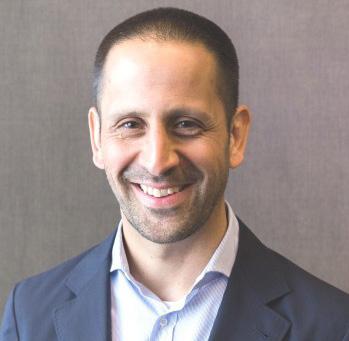
Experience in these industries formed Al-Saleh’s leadership approach when appointed in October 2020. The company has since witnessed great success in promoting its safety and sustainability message as it provides large goods-delivery vehicles that double as safer, more eco-friendly logistics solutions.


As a German car designer, Thomas Ingenlath was previously the Senior Vice President Design of Polestar’s parent company, Volvo Cars. He received a Master’s in Vehicle Design from the Royal College of Art, London, which led to a career in automotive design for the likes of Volkswagen Group brands Audi and Skoda.

Releasing more popular cars into the automotive market, Polestar has become one of the top choices for automotive leasing services and consumers globally. Despite the company’s ties with Volvo Cars—which also sells EVs—the company has its own sleek and powerful identity, causing it to feature in the Top 10 Pure-Play EV Companies list in our October 2022 issue.

Ola Källenius has overseen many of the company's achievements in his time on the board, but the electrification of heavy-goods vehicles (HGVs) is perhaps one of the finest. As a graduate of the Stockholm School of Economics, Källenius has worked across various facets of Daimler AG during his career.

The automotive manufacturer is heavily invested in electrification, with many of its forecourt offerings switching to all-electric propulsion—including its HGV range.
 MERCEDES-BENZ
MERCEDES-BENZ
With an estimated net worth of US$1.7bn in December 2021, RJ Scaringe is the relentless individual behind the Rivian EV brand—specifically, in highlighting their ability to be exciting and provide opportunities for adventure.

An engineer by trade, Scaringe grew up as a car enthusiast restoring vehicles in his neighbour’s garage. Learning the sad truth—that the automotive industry was thriving at the detriment of the planet—he set about creating the foundations of the company that is now loved for the excitement, ingenuity, and creativity built into each model.

#4
Serving at the helm of NIO—the company that saw new potential in alternative charging solutions—Li is the Chinese entrepreneur and businessman behind the EV manufacturer and battery swapping system.

Having founded the company in 2014, the company has now become one of the most influential thanks to its foresight of the EV charging dilemma. Li also has a Bachelor’s Degree in Sociology from Peking University and went on to co-found Beijing Creative & Interactive Digital Technology Co., Ltd.

#

Not only one of the largest automotive corporations on the planet, General Motors (GM) is now producing exciting new updates as it navigates a strategic and innovative path towards electrification. Mary Barra is the driving force behind GM’s success in sustainable mobility development and is the leading voice in spreading the company’s message.
The firm is committed to developing EVs holistically, focusing on the platforms that make up the foundations of its vehicles. Its Ultium platform is a triumph in EV technology, built to transition the company from its traditional automotive position.

CEO Chuanfu’s heart has, since his early academic days, been married to science and technology. Studying a Master of Science at the Beijing NonFerrous Research Institute following a Bachelor of Arts and Science at the Central South Industrial University of Technology, Chuanfu’s academic achievements dovetail nicely as he powers China with EVs.

Founder and CEO of BYD, Chuanfu is the leader of a business going above and beyond the consumer EV market, sharing its electrification innovation in the form of public transport vehicles to fully electrify cities. So notable are the company’s endeavours that it continues to battle it out with Tesla to lead various national automotive markets.



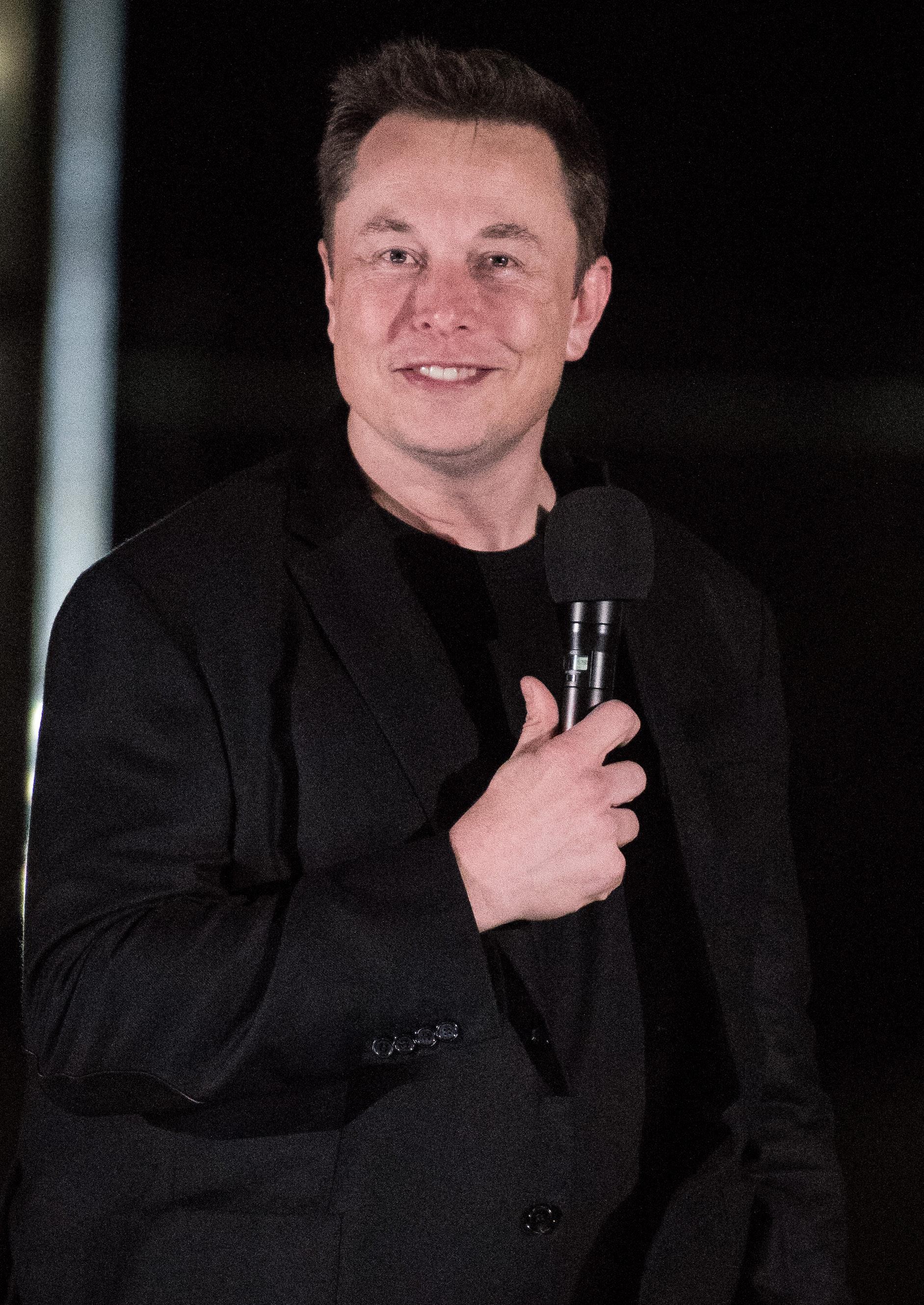 PHOTO CREDIT: JOSHUA LOTT / STRINGER
PHOTO CREDIT: JOSHUA LOTT / STRINGER

Everyone in the industry knows him as the power behind the Tesla brand. Elon Musk co-founded the company— now approaching its 20th year of operation—and has delivered impressive new vehicles that broke the boundaries of electrification.
Musk continues to lead the firm to new heights, despite disruptions from COVID-19 and other supply chain shortages. This includes leading the organisation’s innovation in consumer vehicles, charging and, now, heavy goods vehicles and battery manufacturing.




 SAM CLARKE CHIEF VEHICLE OFFICER GRIDSERVE
SAM CLARKE CHIEF VEHICLE OFFICER GRIDSERVE

 RODI
ALEX GILBERT HEAD OF ENERGY & ELECTRIFICATION TRANSPORT FOR LONDON
RODI
ALEX GILBERT HEAD OF ENERGY & ELECTRIFICATION TRANSPORT FOR LONDON
Electrification is inevitable and business is a major part of it.
Electric vehicles have quickly become part of the wider push for e-mobility, particularly as countries looks to become more sustainable through transport innovation.
More and more people are turning to electric vehicles as a sustainable and eco-friendly alternative to traditional fossil-fuel-powered cars, of which businesses are to thank for the current infrastructure, automobiles, and technology advancements that we see today.
To celebrate this exciting shift towards e-mobility, EV Magazine will host an exclusive live show at the London Transport Museum on the 2nd February 2023.
This event will feature insights via keynote sessions and panel discussions to create a comprehensive view of the entire e-mobility process, from conceptualisation and sourcing through to the circular economy and transport longevity.
Attendees will have the opportunity to attend online or in-person (with limited availability). The event promises to be a great opportunity to not only learn about the EV industry, but also connect with like-minded individuals and businesses who are passionate about sustainability and the future of transportation.
Don't miss out on this exciting event and the opportunity to gain insights about the future of electric vehicles and e-mobility from some of the most influential people leading the industry.
Join us online or in-person and be a part of the movement towards a more sustainable future.
2ND FEB 2023
6:35-8PM STREAMED LIVE FROM L ONDON TRANSPORT MUSEUM
THE MUST SEE FREE VIRTUAL EVENT

THE MUST SEE FREE VIRTUAL EVENT
2ND FEB 2023 | 6:55-8:20PM GMT
STREAMED LIVE FROM LONDON TRANSPORT MUSEUM

GET YOUR TICKETS
